Say's Phoebe (Sayornis saya) in Carteret Co., NC
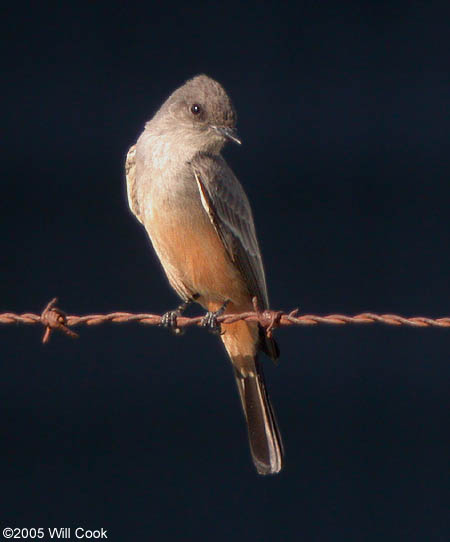
| On 1 December 2005, Sam Cooper discovered this Say's Phoebe at a large commercial farm in Carteret Co., NC. This farm is a commercial operation with restricted access, so only a small number of birders were allowed in the next day to confirm the discovery. I was fortunate to be able to join a carload and help rediscover and document the find. The bird was still present on Dec. 6, but unfortunately the owners are no longer allowing birders onto the property to look for the bird. Say's Phoebe is accidental stray in North Carolina from the western half of North America, with only a few previous records, the last one of which was in the 1980's. |
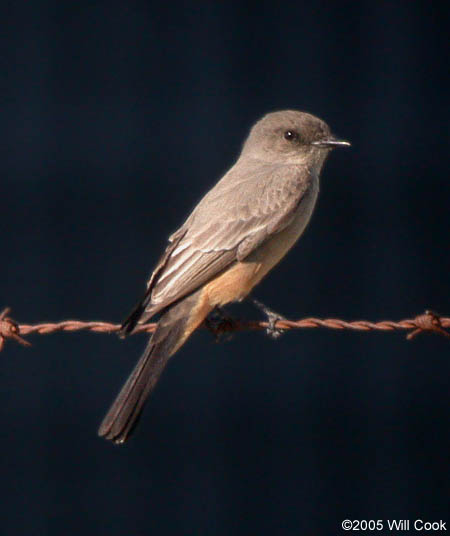
| Say's Phoebe is somewhat similar to the related Eastern Phoebe, but is noticeably larger, paler gray on the back, and has rich rusty-ochre belly and undertail coverts. |
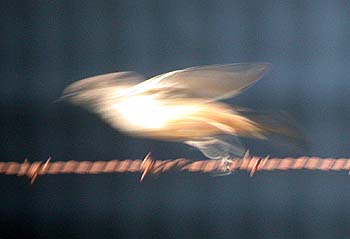
| It's also a much more active feeder, always dashing after insects that happen to fly by. |
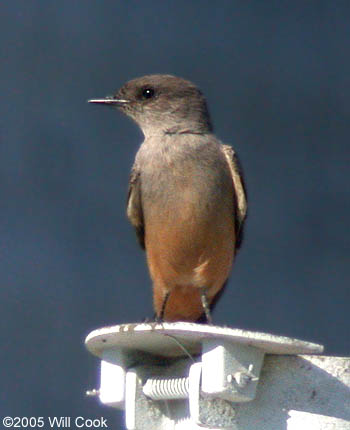
| After the chase, the phoebe would return to one of its favored perches near the large grain silos. |
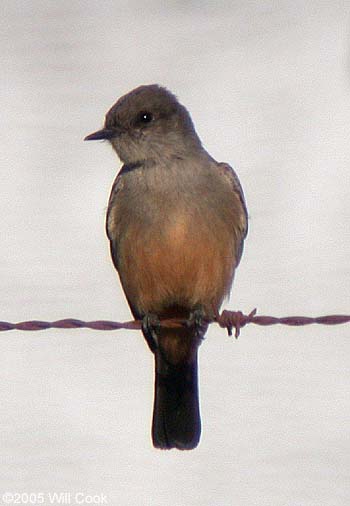
| The white spot on the eye is reflection from the sun - these photos were taken without flash, using a Nikon CoolPix 995 digital camera held to a Kowa TSN-824 spotting scope (about 80x magnification). |
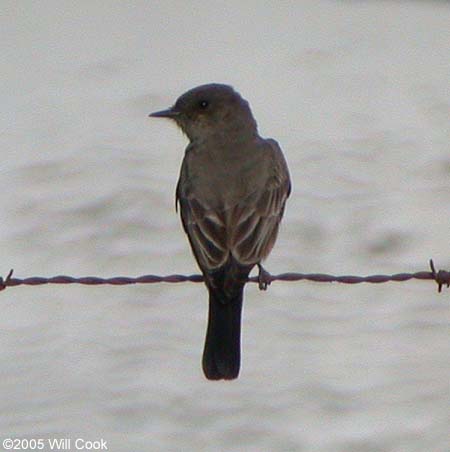
| The tail is black, contrasting with the paler gray upperparts. The dark gray wings have pale gray feather edges. The black bill is straight, seeming a little longer than that of Eastern Phoebe. |
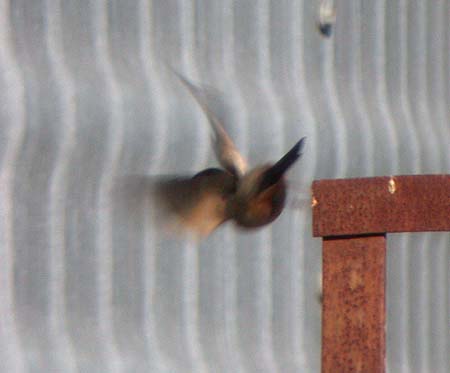
| Sayornis sayonara. The bird zoomed up and over the buildings and out of sight, returning to the silo area after an extended sortie. (The phoebe is headed down and away to the left. You can see the black tail extending to the upper right.) |

| The surrounding farm is a vast desert of clearcut cropland approximately the area of Lake Mattamuskeet, more similar to what you would find in the prairie states than any other area of North Carolina. The Say's Phoebe was hanging around the cluster of grain silos and other buildings on the right of this picture. |